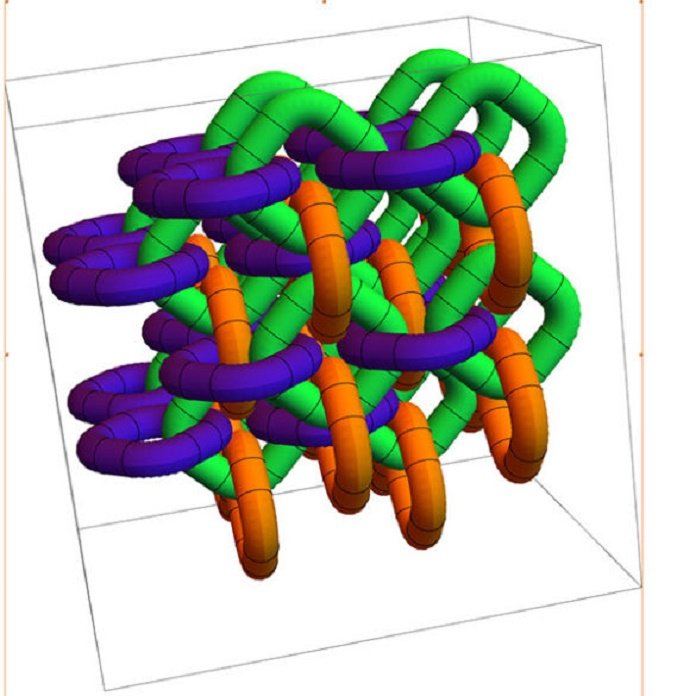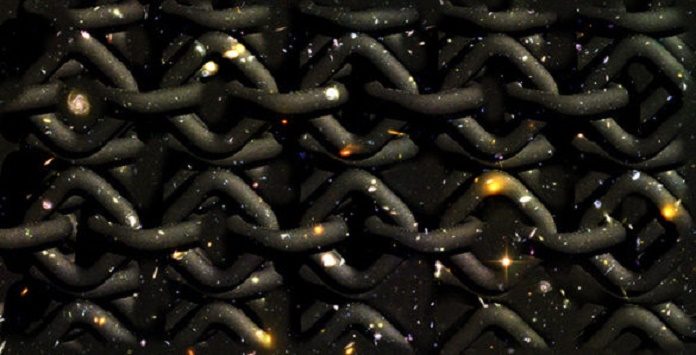You might never consider the reason behind why our universe has three dimensions. Although the question is one of the most profound puzzles in cosmology. But now Vanderbilt scientists finally found an answer on this.
An idea that mixes particle physics with something called knot theory could not only offer an explanation. According to them, the natural tendency for things to tie up could explain the why our universe has three-dimensions and how it formed. It could also help them discover what powered the colossal growth-spurt the Universe experienced just moments after its creation.
To figure out the answer, scientists took a common element from the standard model of particle physics and mixed it with a little basic knot theory. Thus, they created a novel scenario through which they can explain the predominance of three dimensions.

They mainly involved flux tube integrated with quarks, elementary particles with protons and neutrons. These protons and neutrons are bounded by another particle called gluon that held quarks together. Gluons link positive quarks to matching negative antiquarks with flexible strands of energy i.e., flux tubes.
When these linked quarks get separated, the flux tube stretches itself until it breaks. Once it breaks, it started emitting energy to form a second quark-antiquark pair that splits up and binds with the original particles, producing two pairs of bound particles.
Thomas Kephart, professor of physics at Vanderbilt said, “We’ve taken the well-known phenomenon of the flux tube and kicked it up to a higher energy level.”
Many studies suggest that the universe was consists of a mixture of quarks and gluons when it was created. But, in this study, scientists realized that a higher energy version of the quark-gluon plasma would have been an ideal environment for flux tube formation in the very early universe.
Scientists explained, “If a tube takes the form of a knot, for example, then it becomes stable and can outlive the particles that created it. If one of the particles traces the path of an overhand knot, for instance, then its flux tube will form a trefoil knot. As a result, the knotted tube will continue to exist, even after the particles that it links annihilate each other. Stable flux tubes are also created when two or more flux tubes become interlinked. The simplest example is the Hopf link, which consists of two interlinked circles.”
In this way, the whole universe is filled up with a tight network of flux tubes. Scientists even calculated the energy that the network might contain and got surprised by knowing, it was enough to power an early period of cosmic inflation.
The term cosmic inflation suggests that the proposition that the early universe went through a period when it expanded from the size of a proton to the size of a grapefruit in less than a trillionth of a second.
This time of hyper-extension takes care of two vital issues in cosmology. It can explain observations that space is both flatter and smoother than astrophysicists think it should be.
Kephart said, “As the universe began expanding, the flux-tube network began decaying and eventually broke apart, eliminating the energy source that was powering the expansion.”
“When the network broke down, it filled the universe with a gas of subatomic particles and radiation, allowing the evolution of the universe to continue along the lines that have previously been determined.”
“The flux-tube theory’s explanation comes from basic knot theory. It was Heinrich Päs who knew that knots only form in three dimensions and wanted to use this fact to explain why we live in three dimensions.”
